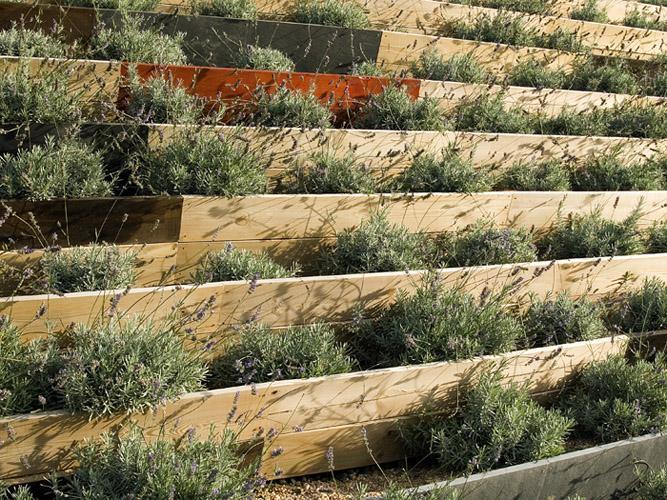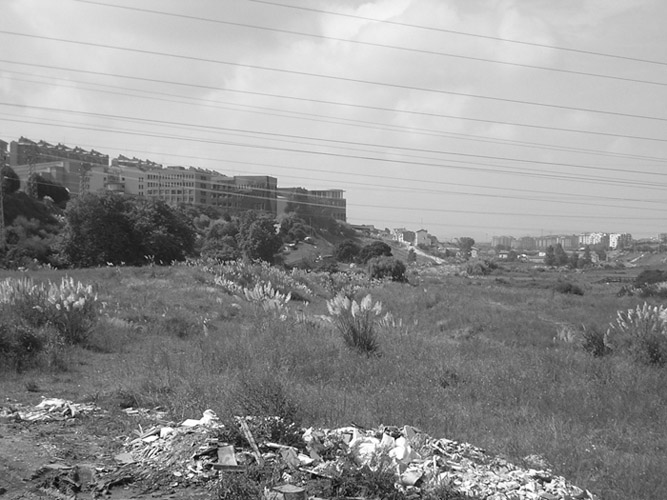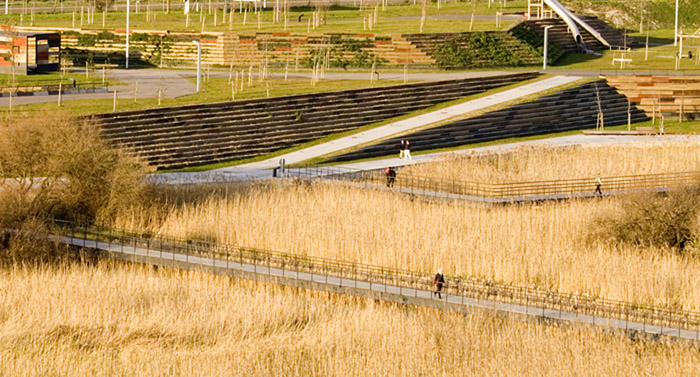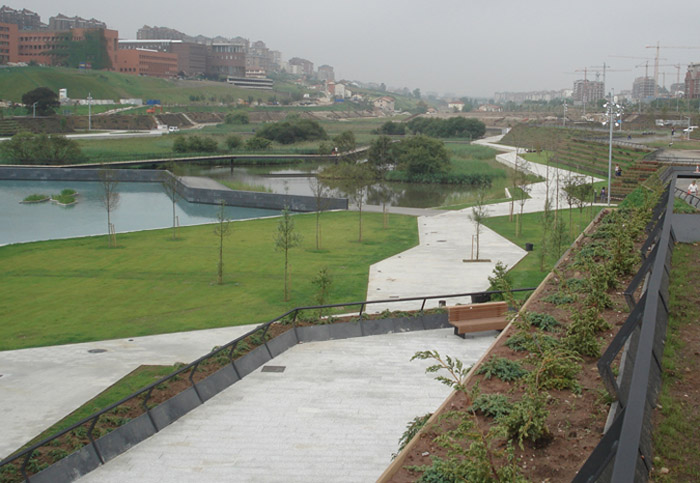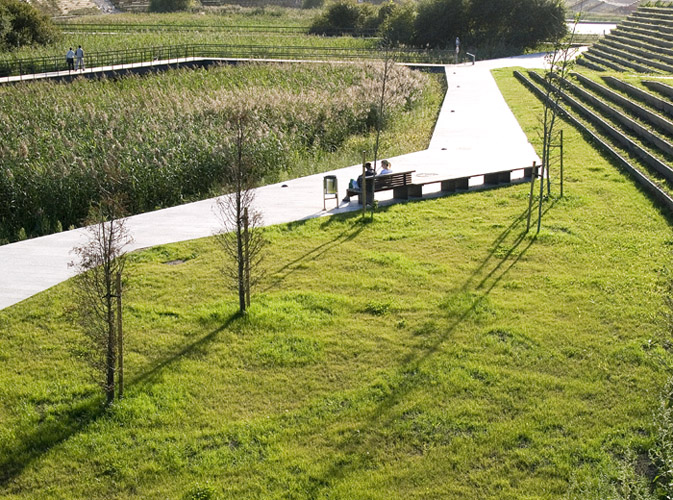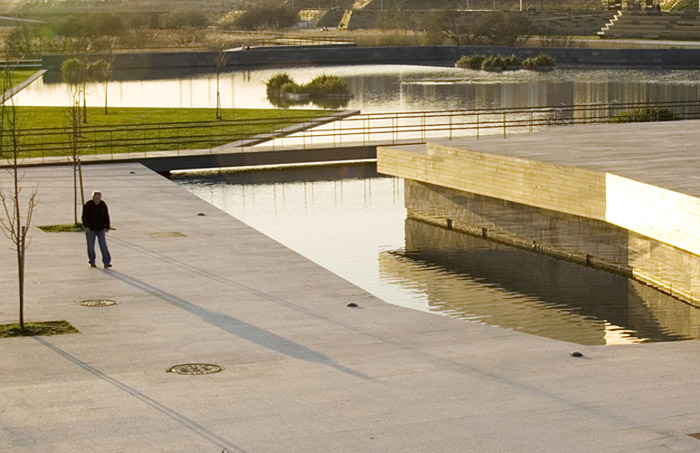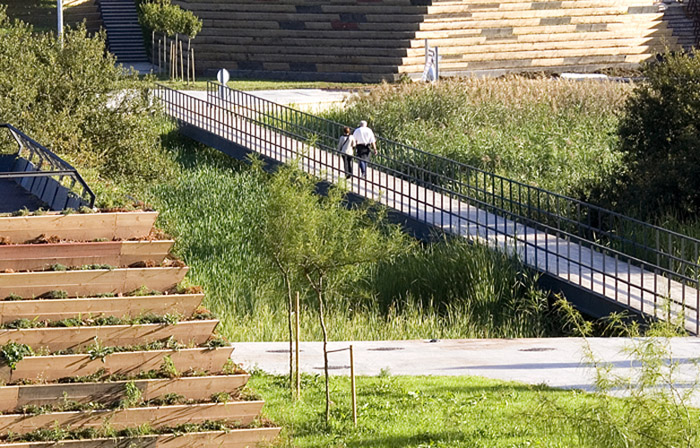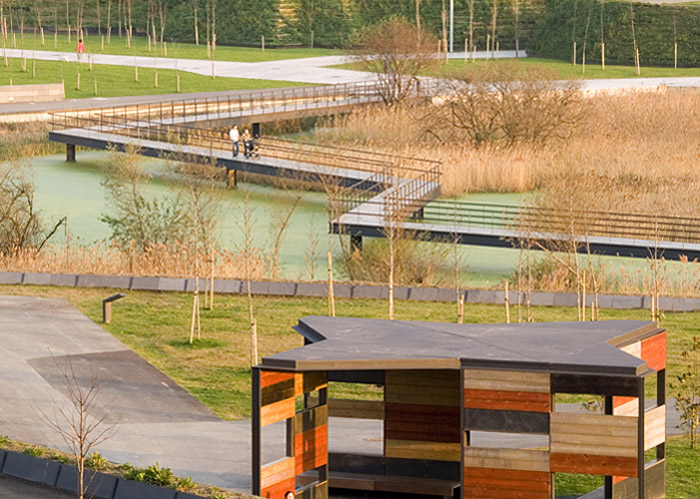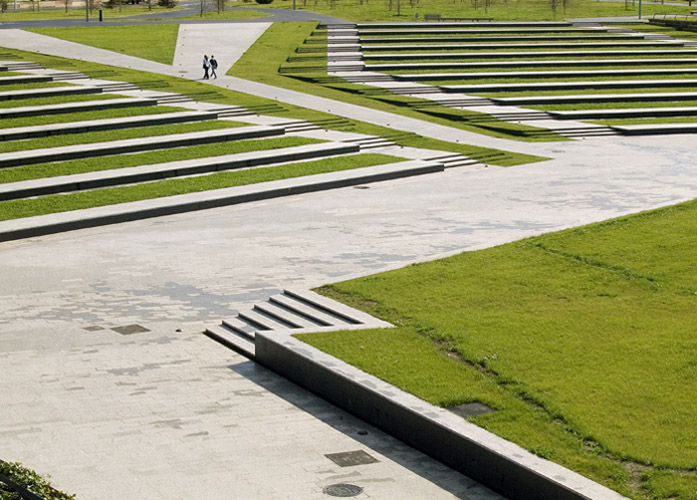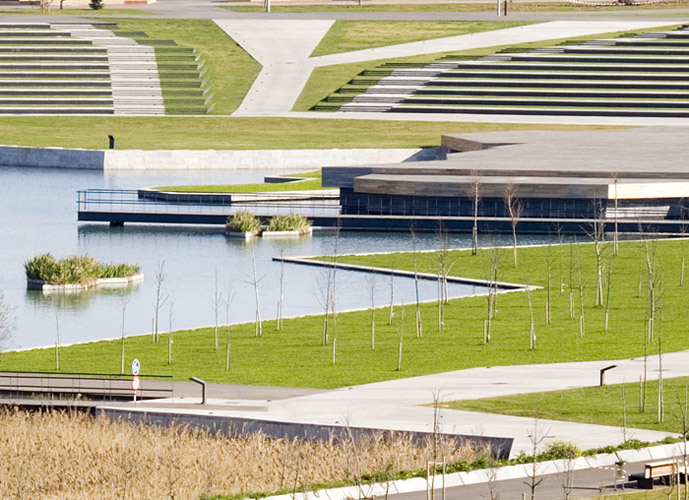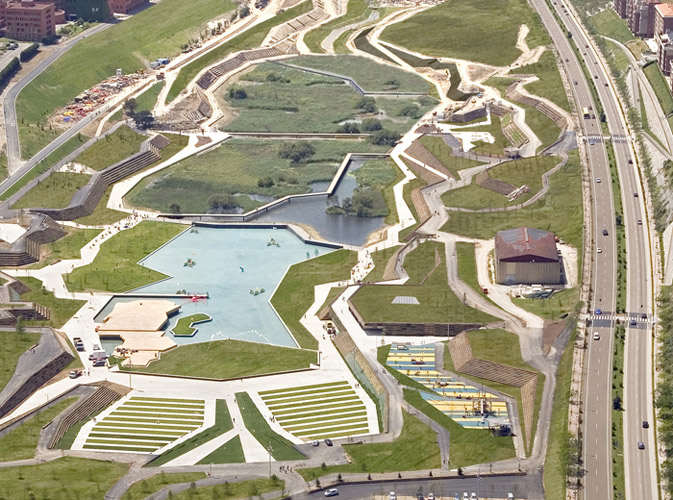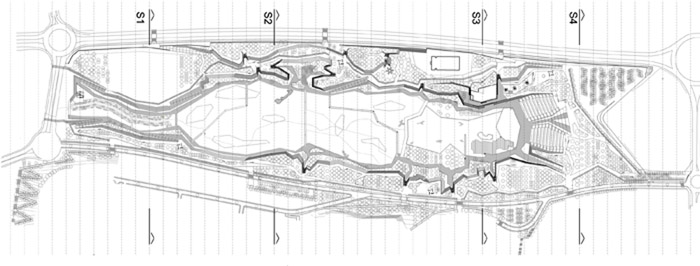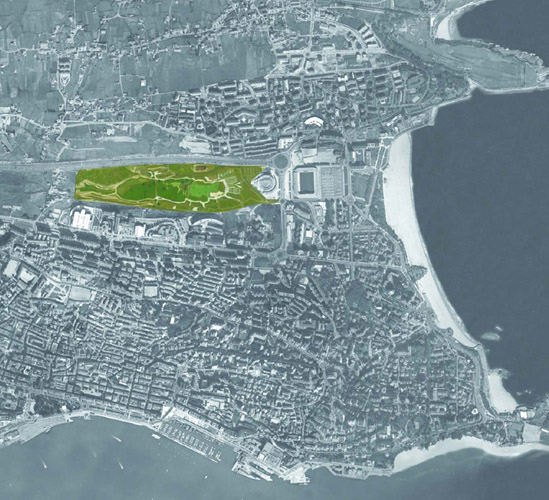Previous state
La Vaguada de las Llamas is a thalweg that runs along the length of the peninsula of Santander to Sardinero Beach. It was once a marshy estuary where the waters of the stream for which it was named ran into those of the Atlantic Ocean. There were small areas of cultivation that coexisted with the dunes and reed-beds in a very valuable natural space. After the middle half of the nineteenth century, when the bourgeoisie of Castile and Madrid discovered the tourist attractions of the Cantabrian capital, a garden-city was built by the beach and this meant filling in the final section of the course of the stream and blocking the tidal flow into the estuary. In the early years of the twentieth century, the construction of the Sardinero football stadium – recently joined by the Santander Sports Centre – broke the geographic connection between the valley and the beach.Cut off and not very accessible, the thalweg became a run-down, marginal space that marked the northern edge of the consolidated city, leaving only the peripheral neighbourhoods of Cueto and Monte on the other side. Over the decades it became an indiscriminate dumping ground for garbage, rubble and liquid waste, which progressively damaged its ecosystem. An above-ground high-tension line was also raised there along with some illegal buildings. With the construction of the S-20 motorway on the northern slope of the valley, its distressing state was visible to everyone entering the city from the north-west.
Aim of the intervention
The ceding of public land from the residential developments in the Valdenoja and La Pereda zones, on the northern side of this expressway made it possible for the City Council to take over the thalweg terrains. All at once, its environmental recovery, which had long been called for by wide-ranging sectors of the public, became a real possibility. Santander had an unrepeatable opportunity to have a substantial green-belt zone that, with the present urban growth in Cueto and Monte, would occupy a central position within the city. With this in mind, and while a controversy was raging in the media between the city council and the autonomous government of Cantabria over the question of its financing, a competition was announced, calling for entries of projects for the Vaguada de las Llamas Atlantic Park.Description
The work carried out so far coincides with the first of the three phases into which the task of total recovery of the thalweg is divided. It involves the easternmost third of the territory, covering some 30 hectares bounded by the University of Cantabria campus to the south, the S-20 motorway to the north, the Bajada de Polio zone to the west, and the Santander Sports Centre to the east. Next to this building is the main access to the thalweg with a parking area paved with slabs that have been perforated so that the grass can grow through them. It can also be reached through the university campus and from three points leading from the side of the motorway, each with a zebra crossing connecting the park with the Cueto neighbourhood.Opposite the main entrance is an amphitheatre consisting of two sets of tiered seating dropping down towards the west, with a background of a large artificial lake that occupies the whole central zone of the park. With an irregular perimeter evoking the outline of the Atlantic Ocean, much of the lake’s surface is occupied by reed-beds, marsh grasses, bulrushes and water-lilies that provide a vegetal cover inhabited by a great variety of birds and amphibians. It is crossed by several footbridges and around the edge is a network of paved paths and a bicycle track two and a half kilometres long. At the bounds of the central plain are terraced banks with wooden garden plots displaying a wide variety of plant species from all latitudes of the Atlantic coast. Above the banks are fields, either open or planted with different kinds of trees, both autochthonous or from other zones of the Atlantic.
Further up are large sports and children’s playing areas, a gymnasium, a play centre and a cafeteria with a roof garden. The park has also earmarked a space for the construction of the future Cantabrian Museum.
Assessment
Since the project of the new Vaguada de las Llamas Atlantic Park was first presented to the public, it has left nobody indifferent. Besides the dispute between the two branches of the administration promoting the project, it has been harshly criticised by local residents, political parties and ecologist groups, who have condemned the introduction of a model of a park that presents, among other alleged defects, a considerable presence of construction elements, formal aggressiveness, an abusive use of non-autochthonous plant species with a limited number of planted trees. In response to these criticisms, some operations to improve the project were introduced, raising the initial budget by some 40%, giving rise to even more outcry. As if this was not enough, in response to a formal complaint lodged by an ecologist group, the Confederación Hidrográfica del Norte (Northern Hydrographic Confederation) opened a case against the City Council for what is deemed to be illegal occupation of the Las Llamas watercourse. Partial demolition of the completed works was ordered, but the Council has appealed against the ruling.The general situation is quite confused and this could probably have been avoided if the project had been conceived and explained in a more participative and transparent fashion. Nevertheless, the nature and scope of the intervention require some time before it can be assessed rigorously and objectively. The thalweg had been subject to such virulent aggression and over so many decades that, from the environmental point of view, the real value of the pre-existing ecosystem was not at all evident. The stream was, more than anything else, a sporadic torrent and the pressures of town planning around it did not augur well for its future. It would not be reckless to imagine that, in the medium term, this land had to shed its peripheral, almost rural character to be integrated within the consolidated urban fabric of an ever-growing Santander that had already begun to encircle it. In this regard, it might be understood that, besides the environmental recovery of a natural space, the operation also consists in the reinforcement of a disorganised urban periphery.
Now, the thalweg is clearly perceivable and established as a green space for public use. This protects it from the depredations of constructors, while making of it a key piece in the physical integration of different types of urban fabrics. From being an impassable barrier and insalubrious dumping ground, it has become a civic axis, the backbone around which the structure of the future city is organised. Time must also be given for the trees to grow so that once they are grown and leafy the park will be worthy of the name “green lung” of the city. If its urban character is accepted, then it might be understood that the use of non-autochthonous plant species, along with the formal references to the geography of the Atlantic coastline, is a response to an educational and universalistic wish to go beyond localisms and the kinds of protection that pertain more to a natural environment. In the spirit of the collector, the plant species that have been brought together from all the latitudes of the Atlantic are presented in the park’s multi-level gardens like books on the shelves of a public library.
David Bravo Bordas, architect
[Last update: 02/05/2018]


